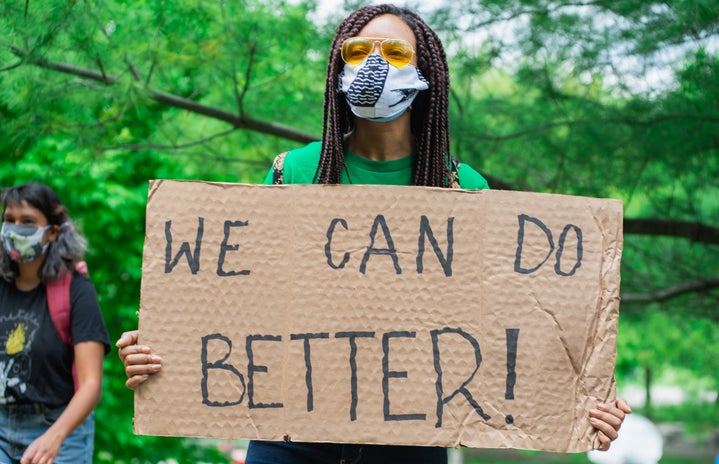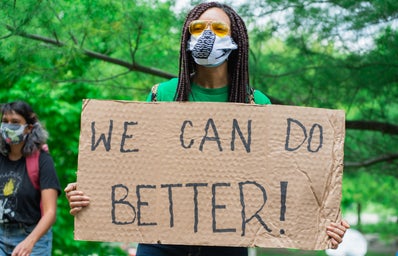“We’re going to cover the American infant mortality rate. Make sure to get some good notes on this,” my professor emphasized before clicking to the next slide. This, of course, was everyone’s warning to start really paying attention to the lecture because this content was probably going to appear on the next exam. So, suddenly, the lecture hall filled with a quietly charged energy as everyone who had been checked out minutes ago prepared to memorize every word on the slide.
This happened during my sophomore year of college, so I had learned how crucial these moments are, and this was no exception. Pen in hand, I was ready to jot down everything my professor had to say about the infant mortality rate. And for a few minutes, I did. My notes were filled with information about how in 2018, the United States had 5.7 deaths per 1,000 live births and regularly ranked poorly when compared to other developed countries like Iceland, Finland and Japan. But I was already familiar with these statistics, so I waited for when we were going to delve into why exactly the United States has such a high infant mortality rate.
To my professor’s credit, the lecture did emphasize that the circumstances surrounding the country’s average become a lot clearer when you investigate the different infant mortality rates of ethnic and racial groups that make up the USA. Especially in the case of non-Hispanic Black Americans, who experienced a heartbreaking average of 10.8 deaths per 1,000 live births in 2018 compared to 4.6 deaths that Non-Hispanic white Americans experienced. “Why are the rates so different?” One of my classmates asked, his voice quieter than usual, reflecting the grim energy that had settled over us all. My professor supplied his answer easily, “Black Americans don’t have the same access to healthcare that white people do.”
A pause. I waited for the details to follow, waited for more data, waited for some mention of how practitioner bias affects outcomes. But all I heard was a click instead as we moved on to the next slide, the content completely unrelated. That day, I was stunned. And writing this article two years later, I still am. Any conversation that attempts to explore the experiences of Black Americans in our country’s healthcare system and fails to cite the research that documents implicit bias in healthcare practitioners is abhorrently irresponsible. I’m still trying to wrap my head around how I sat in a university classroom in 2019 and was fed this ridiculously incomplete narrative.

At this point, it’s a given that lobbying for increased access to healthcare is vital now more than ever, especially for Black American communities. But as allies, we cannot further the narrative that access alone will be enough to help these populations because doing so fails to address the biases running rampant in the healthcare system and the damage they cause.
On the specific topic of infant mortality rates, University of Michigan research has documented that “even after adjusting for differences in maternal socioeconomic status and behaviour, significant disparities exist in IMR between Black and White babies in the US.” Data has reminded us time and time again that there’s more to the story of healthcare disparities, so it’s our responsibility to incorporate these findings into our activism. Focusing solely on the long-existing external systems that contribute to these outcomes blinds us to the internal systems that support them.
Most allies in 2021 might be familiar with the systematic review by the National Institutes of Health, which found that “most health care providers appear to have an implicit bias in terms of… negative attitudes toward people of color,” but it’s equally important that we familiarize ourselves with the real-life outcomes that result from this bias, or we risk downplaying the severity of it. Black American communities also experience a drastically worse maternal mortality rate than their white counterparts, and this is not solely attributable to reduced access to healthcare.
In 2018, Black mothers died 2½ times more often than white women, and just as with the Black American infant mortality rate, we have to investigate all the factors involved, especially the role implicit bias might be playing. A 2017 article published by NPR examines the maternal mortality rate and presents a particularly striking finding by an NYC analysis: “black, college-educated mothers who gave birth in local hospitals were more likely to suffer severe complications of pregnancy or childbirth than white women who never graduated from high school.” Clearly, we cannot just advocate for healthcare access and call it a day.
Racist structures need to be torn down, but, allies, we cannot neglect to turn our focus inward as well. When we conveniently exclude implicit biases from narratives like these, we enable them to destroy more and more people’s lives. If we do not tackle these biases that we may be guilty of ourselves, racist systems will simply revive themselves over time.



